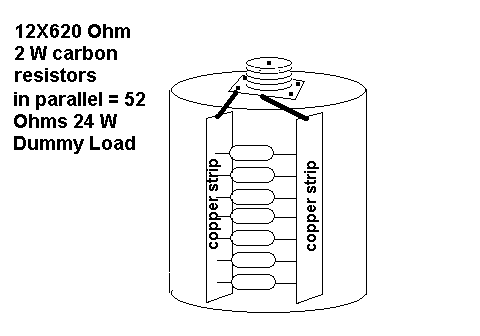
Collection of Amateur Radio Antenna Projects and informations
Saturday, June 28, 2014
Amateur Radio Antenna Projects and Information
Flower Pot Antenna - http://vk2zoi.com - and interesting link to an interesting antenna design that was very kindly sent to me by Phil M6MRP
G4ILO - Stealth Antennas: http://www.g4ilo.com/stealth.html
M0WYM - QRP Fan Dipole: http://www.radiowymsey.org/FanDipole/fandiploe.htm
See Multi Band Dipoles Compared: http://www.dxzone.com/cgi-bin/dir/jump2.cgi?ID=7499
See Practical Dipole Antennas Compared: http://www.qsl.net/ta1dx/amator/practical_dipole_antenna.htm
The ALL Band HF Doublet on Ham Universe: http://www.hamuniverse.com/hfdoublet.html
Multi-band Inverted V $4 Special by Joe Tyburczy, W1GFH: http://www.qsl.net/wb1gfh/antenna.html
http://www.hamuniverse.com/fourdollarspecialw1gfh.html
The Norcal Doublet Antenna: http://www.norcalqrp.org/norcaldoublet.htm
N4JTE - 6 Band Ribbon Dipole by N4JTE
http://n4jte.blogspot.com/2009/04/n4jte-6-band-ribbon-antenna-35.html
http://g8jnj.webs.com/
http://www.astromag.co.uk/vertical/
http://www.hamuniverse.com/multidipole.html
http://www.hamuniverse.com/fourdollarspecialw1gfh.html
http://n4jte.blogspot.com/2009/04/n4jte-6-band-ribbon-antenna-35.html
http://www.dxzone.com/cgi-bin/dir/jump2.cgi?ID=20420
http://www.tc006a8364.pwp.blueyonder.co.uk/brats/radio_07/advanced/mathequat_1.htm
http://www.tdars.org/library/TechTopics/tech22.html
http://www.rsgb.org/tutors/advanced/pdf/maths_primer.pdf
http://www.users.icscotland.net/~len.paget/Mini%20quad.pdf
http://www.users.icscotland.net/~len.paget/5%20band%20Inverted%20L.pdf
http://www.users.icscotland.net/~len.paget/Inverted%20L%20adding%20top%20band.pdf
http://www.btinternet.com/~shaun.scannell/club/w3dzz.htm
http://homepage.ntlworld.com/lapthorn/70cms.htm
http://mw0idx.co.uk/2mPortPockBeamGW0VMW.html
http://www.dxzone.com
http://www.arrl.org/tis/info/pdf/0207040.pdf
http://www.dxzone.com/cgi-bin/dir/jump2.cgi?ID=7466
W2BLC - Amateur Radio Antenna Ideas: http://www.w2blc.us/linkant.htm
End Fed Half Wave Antenna
The End Fed Half Wave Antenna (EFHWA) is fed at a voltage node via a parallel resonant circuit against a ‘short counterpoise’, it is a favourite of backpackers and outdoor types. It can be considered as a half wave dipole that’s end-fed at a voltage node rather than the current node, as is more usual. This is a very handy arrangement for portable QRP work.
EFHWA Link: http://www.aa5tb.com/efha.html

End Fed Half Wave Antenna by AA5TB
http://www.aa5tb.com/efha.html
I suspect that nothing new or radical has happened in the field of radio aerials in a VERY long time, like at least many tens of decades. Most of the new wonder aerials are really a con. Choke off the feed-line and then see how good they really are. Prime among the baddies is the CFA. It doesn’t really work, at least if you place a choke in the feed-line. With any real aerial, there should be minimal radiation from the feed system… so a choke should really make no difference at all, but for the CFA it does! The CFA is not alone, there are others. The popular G5RV is another design with a radiating feed, deliberately so, but of course G5RV planned it that way. He wasn’t cheating… merely being a bit devious, to make it multi-band
Lots of stuff to pass on to my fellow radio club members, most of whom are of the ‘if it’s not expensive, it can’t be any good’ school of thought when it comes to aerials. Nothing of course could be further from the truth! Aerials are one area where it makes a lot of sense to build our own." Website of GM1SXX - www.observations.biz
Thanks for your email Allan. It's a good idea to point out that an antenna could be pressed into use on odd multiples of its resonant frequency, hence a 3.6MHz antenna for 80m could be useful near the 30 metre, 10.1MHz, band - near to the third harmonic of 3.5 MHz although, as you observe, the radiation pattern may be quite distorted from the traditionally expected dipole pattern and be more petal shaped. The same goes for a 7.1 MHz antenna for 40m being usable on its third harmonic of 21.3 MHz for the 15m band - a 40m dipole being three half waves an the 21 MHz band.
I have not experimented with a full size 80m dipole, but I would guess that it might be useful at 5 times 3.6Mhz in the 18 MHz / 17m band?
The point made about feeding a familiar dipole at the current node rather than the voltage node is obviously very important and, I imagine, sometimes overlooked.
PLANS: Download the pdf plans produced by G0KYA here > More from G0KYA here: http://g0kya.blogspot.com